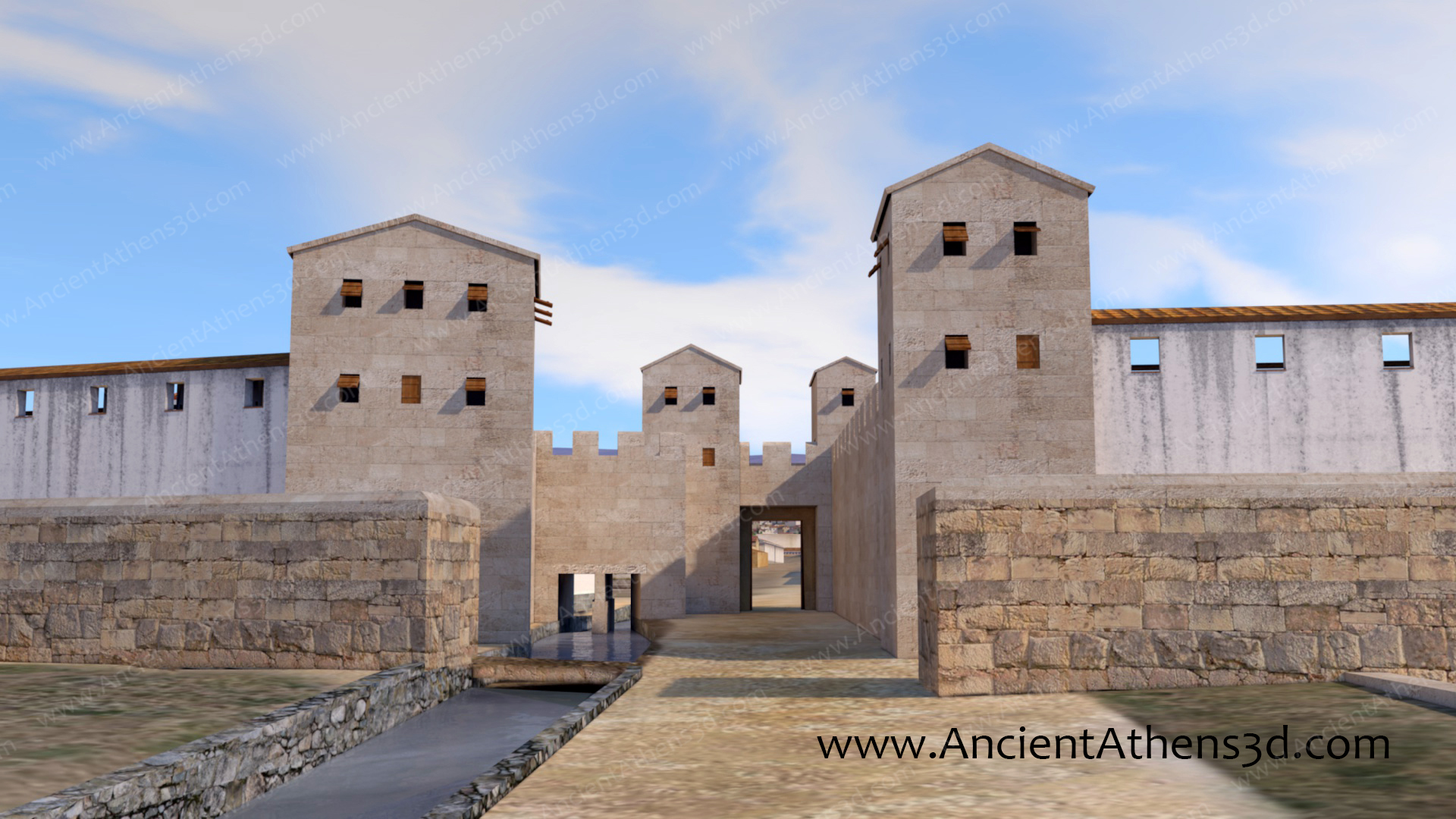The south slope of the Acropolis (479-323 BC)
At the same time with the building programme on the Acropolis, the area of the hill’s southern slope was rearranged. The Theatre of Dionysus was renovated and a new temple was built near the older one. Pericles constructed a big odeion, while the sanctuary of Asclepius was founded on the west, the Asclepieion. Furthermore, more small temples and other sanctuaries filled the southwest area of the Acropolis.
The Sanctuary and the Theatre of Dionysus
The Theatre of Dionysus is perhaps the most ancient theatre in the world. The area where it was constructed was the sanctuary of Dionysus with whom the ancient drama was closely related. In the archaic period, there was only a small temple and north of this temple was a circular space, the orchestra, where various events took place during the celebrations of the god (the Rural and the City Dionysia). The spectators sat on the side of the hill where wooden benches (ikria) were later added.
The wooden theatre of the classical period probably was of rectangular plan, in contrast to the later theatres which were of semicircular. The first row of seats was made of stone and was intended for officials. In this theatre the great tragic and comic poets presented their plays for the first time. After several accidents during which the wooden stands collapsed, it was decided, at the end of the 4th century BC, to rebuilt it in stone. South of the theatre and behind the stage, there was the sanctuary of Dionysus. In the southern wall of stage was a small stoa and nearby was the archaic temple of Dionysus. Next to it, a new doric temple was erected in 340 BC measuring 21,95m X 10,5m. Closely related to the theatre are the choragic monuments. These were temple-like buildings that were erected by the sponsors of the winning dramatic plays, on the top of which a tripod was placed as a price.The Asclepieion
The sanctuary of Asclepius, the Asclepieion was founded in the end of 5th century BC by a man named Telemachus, who brought the cult of the healer god in Athens from Epidaurus. The place where it was built was selected because there was a small spring, very essential element for the cleaning of the patients.
The sanctuary consisted of a the small temple of Asclepius and two stoas. The one was Doric and two-storied. This was used as an infirmary. It was called enkoimeterion (the place where someone sleeps) because there slept the patients waiting to see the god in their dream, giving the advises for treatment or to cure them. A second smaller ionic stoa could be found westwards. It had four rooms in which the various visitors resided. The sanctuary was destroyed in 267 AD by their Heruli and later on, was replaced by a Christian basilica dedicated to the Saints Anargyroi, not by chance, as they are considered protectors of health.The Odeion of Pericles
West of the Theatre was the Odeion of Pericles. It was almost square (62,4m X 68,6m) and was constructed in the middle of the 5th c. BC. According to ancient writers, its plan was based on Xerxes’ tent and the roof was made of the Persian of boats‘ timber. At the beginning, it was used as lawcourt and a meeting place for the councils. Later however, was hosting the musical competitions during the feast of Panathenaea.
The Odeion was destroyed by the Athenians, in 86 BC, in order to avoid the use of the timber by the Roman general Sylla who was at the time besieging the city. It was rebuilt in 61 BC. with the expenses of the king of Cappadocia, Ariobarzanes the 2nd. The Odeion of Pericles was the biggest roofed building of Greek antiquity.Other buildings












